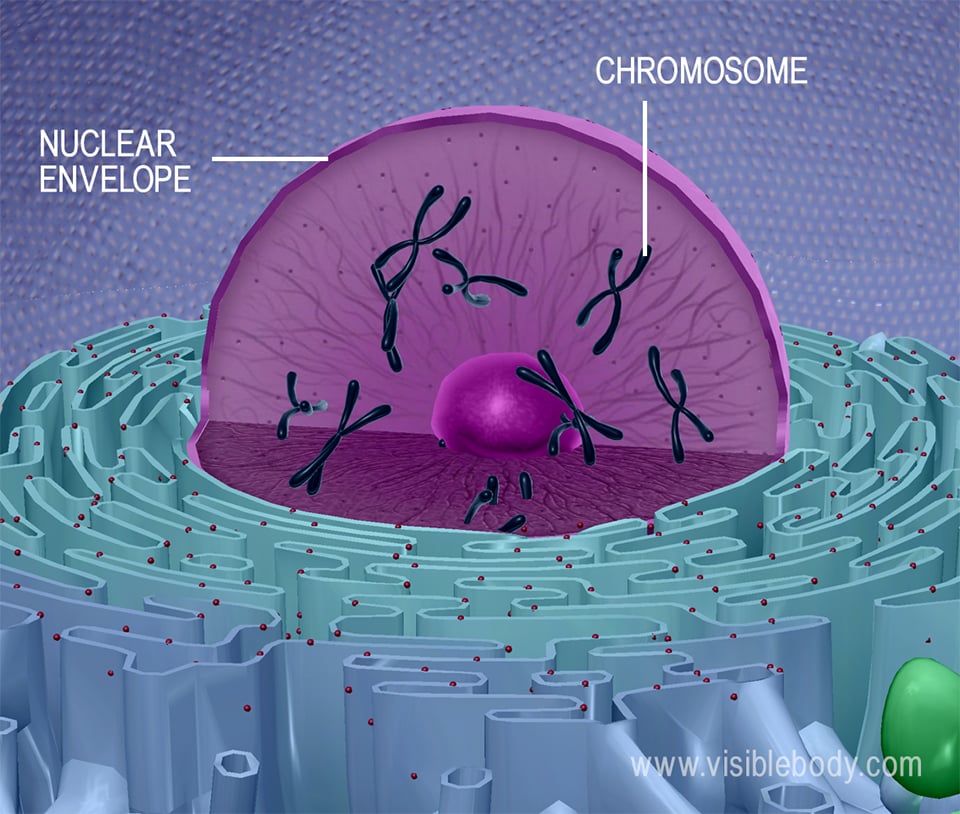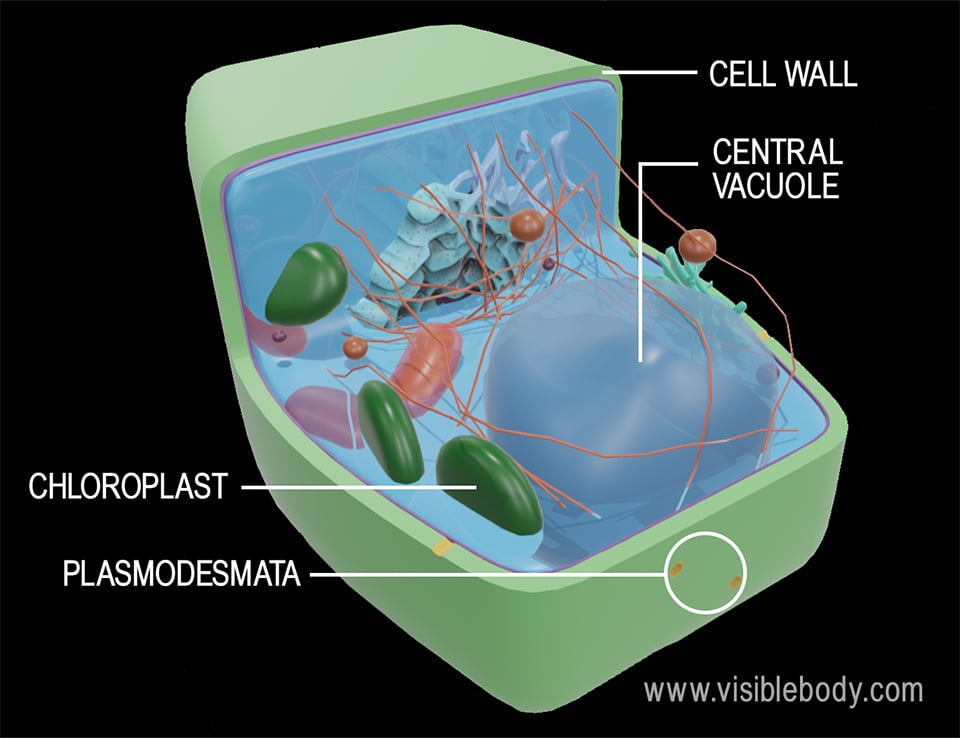Has A Nucleus Plant Or Animal Cell
Eukaryotic cells are found in plants, animals, fungi, and protists. They generally accept a nucleus—an organelle surrounded by a membrane chosen the nuclear envelope—where Deoxyribonucleic acid is stored. There are a few exceptions to this generalization, such as human reddish claret cells, which don't have a nucleus when mature. Eukaryotic cells are typically larger than prokaryotic cells, ranging from effectually x to 100 μm in diameter. While many eukaryotes consist of multiple cells, there are also single-celled eukaryotes. Similar bacteria, beast cells have a plasma membrane, cytoplasm, and DNA. Withal, you'll observe that the inside and outside of animate being cells looks quite different from that of leaner. For one, fauna cells don't have a cell wall. Instead, they have a cytoskeleton, a network of filaments composed of proteins. The cytoskeleton provides support and internal transport for the cell. In add-on, nearly animal cells have a nucleus, a special organelle that stores Deoxyribonucleic acid. The Dna inside the nucleus is ordinarily organized into strings called chromosomes. The cytoplasm of animal cells is filled with a variety of organelles that help the cells survive and reproduce. Hither are some key cytoplasm-home organelles and their functions: Organelle Function Centrosome The centrioles and pericentriolar fabric inside play a role in cell division and building microtubules Golgi appliance Modifies, sorts and packs proteins into transfer vesicles, then they tin can go elsewhere in the cell or be secreted Lysosomes & peroxisomes Help remove waste product, break down toxic compounds, and recycle jail cell structures Mitochondria Generate energy Ribosomes Synthesize proteins Rough endoplasmic reticulum Continuous with outer layer of nuclear envelope and has ribosomes embedded on the outer membrane; helps ship materials within the prison cell; segregates newly-fabricated proteins for transport by vesicles Smooth endoplasmic reticulum Dissever from the nuclear membrane, only continuous with the rough endoplasmic reticulum, and does non contain ribosomes; site of lipid synthesis, carbohydrate metabolism and detoxification; helps transport materials within the cell Vesicles Pocket-sized membranous sacs that ship materials inside the cell; tin can fuse with the cell membrane to release contents Similar animal cells and other eukaryotic cells, institute cells take a nucleus that stores their Dna. However, plant cells differ from brute cells in several important means. Outset, unlike animate being cells, establish cells have a cell wall, which is very unlike from prokaryotic cell walls. Establish cell walls have channels called plasmodesmata (sg. plasmodesma) that allow cells to communicate by passing sugars, ions, and even proteins and RNA from i jail cell to another. Animate being and establish cells both accept mitochondria. Mitochondria use glucose and oxygen to carry out cellular respiration and create ATP, a molecule that powers processes throughout the cell. In add-on to mitochondria, institute cells also have special structures called chloroplasts that are essential to the process of photosynthesis. In this procedure, plants apply light, water, and carbon dioxide to produce glucose, which can later be broken downwardly by cellular respiration. Did you know that mitochondria and chloroplasts have their own Dna, divide and distinct from the DNA in the nucleus? Some other structure that is present in constitute cells, merely not in animal cells, is the primal vacuole. In plant cells, central vacuoles are used to maintain turgor pressure by keeping the large vacuole filled with h2o to support the cell. Here are the structures that are unique to creature cells, contrasted with the ones that are unique to plant cells: In Brute Cells Just In Plant Cells But What is a eukaryote? A look at animal and plant cells
1. Establish and brute cells are eukaryotic, significant that they have nuclei
two. Animal cells are supported by a cytoskeleton, use mitochondria to generate energy, and employ lysosomes to aid remove waste material
Brute cell


three. Establish cells are supported past a cell wall, use chloroplasts to carry out photosynthesis, and incorporate a big key vacuole that stores water
Plant cell


4. A quick comparing of institute and animal cells
Centrosomes
CentriolesCell wall
Primal vacuole
Chloroplasts
Plasmodesma


Source: https://www.visiblebody.com/learn/biology/cells/eukaryotic-cells
Posted by: binettewallard.blogspot.com

0 Response to "Has A Nucleus Plant Or Animal Cell"
Post a Comment